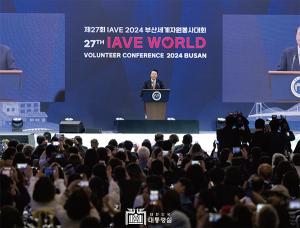 |
||
| ▲ Braintree Biotechnology Institute / CEO Dr. Hye Young Yun | ||
As more and more people start to care about climate change, the ways to make the Earth green again are also on the table to discuss. In the midst of this positive movement, Dr. Hye Young Yun, CEO of the Braintree Biotechnology Institute (BBI), is creating a ripple by releasing an artificial soil ‘Sumok-Kangsaeng(Myco-tree Root Helper)’ that helps trees grow well in poor soil or even in waste soil.
Dr. Yun is a research professor at Seoul National University College of Agriculture and Life Science and established the BBI in 2013. Researchers at the BBI is working on environmental solutions that can response to climate change. Headquartered in Seoul, the BBI runs its factory in Cheorwon and research-purpose forests in Guri and Cheorwon.
 |
Korean fir (Abies koreana) project
Korean fir tree in Jeju is listed in endangered species. The BBI carried out a test on this tree and harvested excellent results: in order to recover fir tree, researchers inoculated seedlings with mycorrhizal fungi and it turned out that the average survival rate was 97%; when mycorrhizal fungi were not treated, the ratio jumped by 1.5 times from 67%.
CEO Dr. Yun says “Fir trees in Hanlla, Jiri and Deogyu Mountains are dying, mainly because of moisture stress caused by temperature rise. We expect that we can make our forests green if more people use mycorrhizal fungi.”
 |
Mycorrhizal fungi as a new solution for climate change
Dr. Yun is the one who first commercialized mycorrhizal fungi in the nation. While working at Seoul National University and for the U.S. Agricultural Research Service of the Department of Agriculture, she focused on useful bacteria for trees and found mycorrhizal fungi.
Mycorrhizal fungi is a soil fungi. It attaches to the root of a tree and lives in symbiosis with the tree. It gains nutrients such as carbohydrate from the tree and in return supplies water and minerals which are absolutely necessary for a tree to grow.
Soil biochemically, mycorrhizal fungi plays a very important role by helping trees grow well in barren or contaminated soil, the reason it emerges as a new solution for climate change.
Mycorrhizal fungi helps roots of a tree to find water in a place the roots are hardly reachable. This is because the fungi expands the surface area of the roots by 1,000 folds which also is the reason that the tree can survive in drought.
More over, the fungi helps the roots to find and absorb nutrients and delivers to them essential nutrients such as phosphorus, copper, calcium, magnesium, zinc and iron.
Further more, the fungi playes a role to protect trees and shrub from harmful bacteria.
 |
Sumok-Kangsaeng(Myco-tree Root Helper)
Sumok-Kangsaeng(Myco-tree Root Helper) is an artificial soil made with advantages of mycorrhizal fungi. Commericializing this fungi has not been easy home and abroad but the BBI now is in the center of buzz among the industry officials.
Sumok-Kangsaeng is artificial soil for forest or landscaping. The former is ideal for various trees including pine, fir, spruce and birch. You can use Sumok-Kangsaeng by mixing it with general soil in 1:1 or 2:1 ratio. Make sure it touches the roots. If not, nothing happens for symbiosis.
The BBI has obtained patents home and abroad, and in Korea, for ‘soil improvement method of mine soil mix and construction waste’ and ‘mushroom fungus-included construction waste recycling horticultural soil and the plant growth promotion method by using this’; in China and Europe, for ‘barren land greening method by using mushroom fungi’ and ‘barren land forestation method by using mushroom fungi’.
Dr. Yun says “It is our goal to be one of the best research institutes in Asia with mycorrhizal fungi.”
백정준 기자 googies@naver.com







